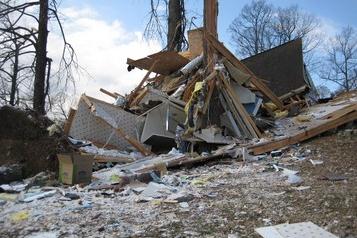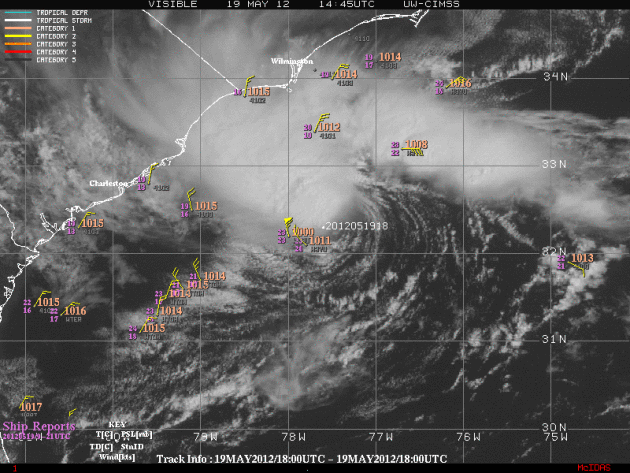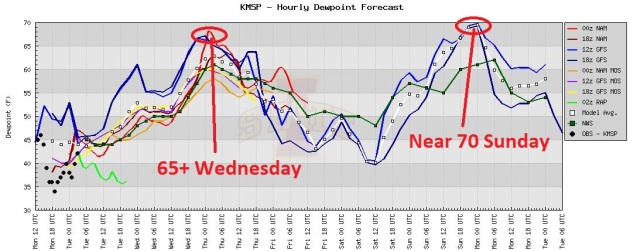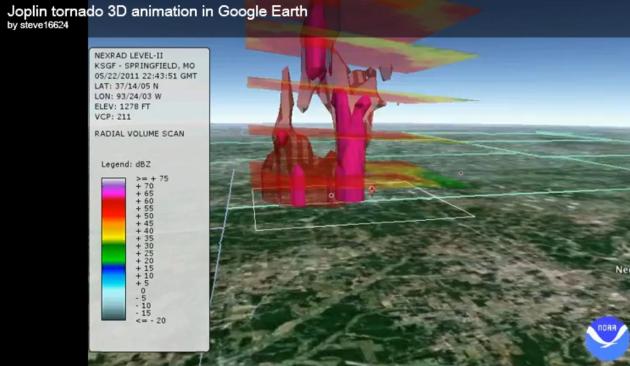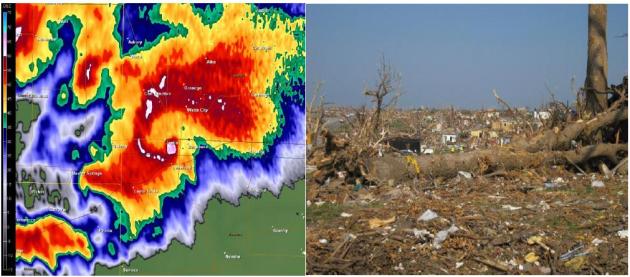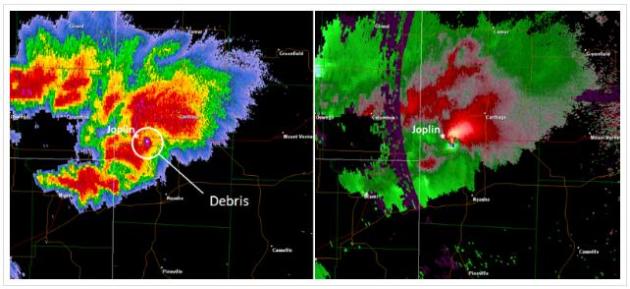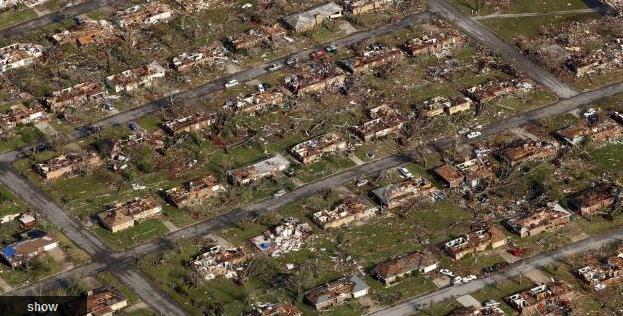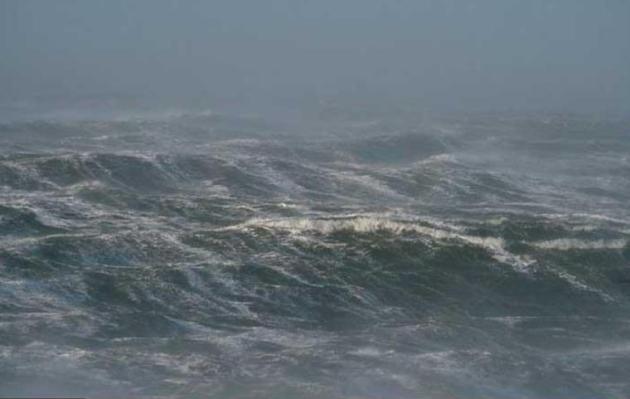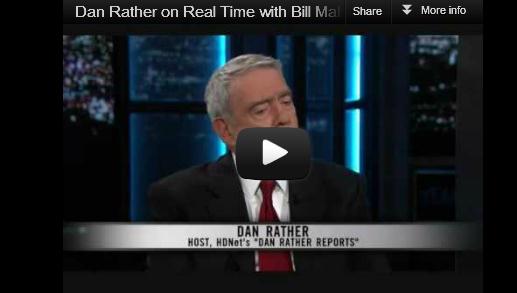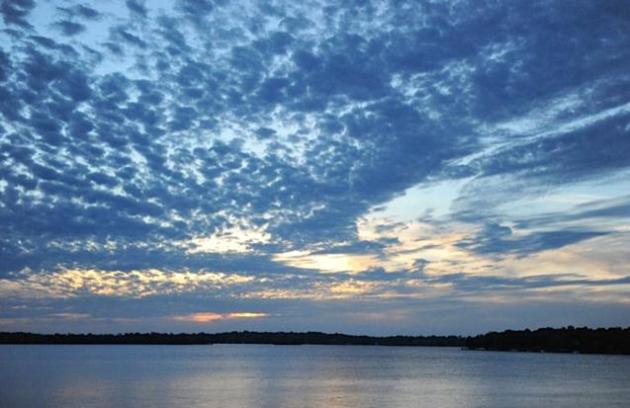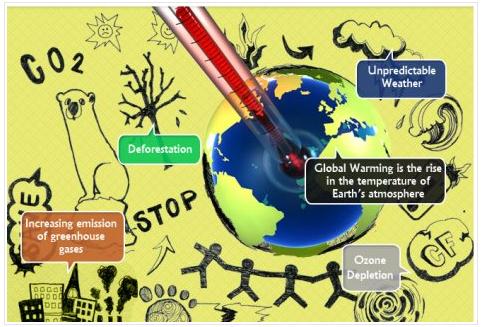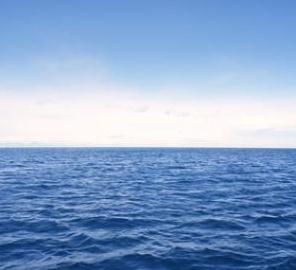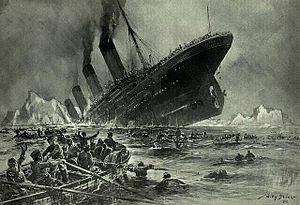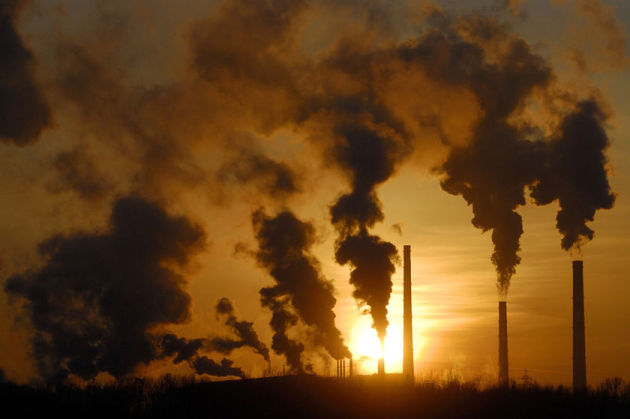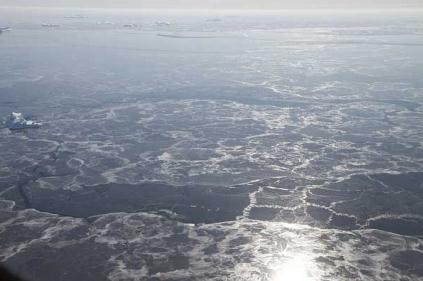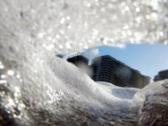"
One of the new descriptions, written in cooperation with social
scientists, informs those in the storm path: “You could be killed if
not underground or in a tornado shelter.” Another warns: “Complete
destruction of entire neighborhoods is likely.”....“We were ringing the
bell a little louder,” Hudson said. “That’s one of the lessons learned
from Joplin".- from a Joplin Globe story highlighted below that
describes the new, more dire and urgent terminology used by local NWS
offices during "tornado emergencies" - when large, violent, killer
tornadoes are on the ground, moving toward urban areas. Photo above:
NOAA.
27 glaciers left at Glacier National Park. In 1910 there were 150 glaciers. Photo courtesy of USGS.
May 22, 2011 Minneapolis Tornado. Here's a good
overview of last year's violent tornado outbreak in the close-in suburbs
and North Minneapolis, from the Twin Cities office of
The National Weather Service: "
The
severe weather season is definitely starting off in a big way this
year, not only in Minnesota, but all across the country. On Sunday, May
22, there were 56 reports of tornadoes extending from northeastern
Oklahoma, up the Mississippi Valley to northern Wisconsin. The strongest
hit was Joplin, Missouri where at least 125 people have lost their
lives and thousands are displaced from their homes. In Minnesota, there
were reports in Fillmore, Hennepin, Anoka, and Washington Counties of
tornadoes and property damage. Here is a radar image, taken at 2:19cst
on May 22 that shows the pronounced hook echo southwest of Columbia
Heights moving to the northwest at 35 miles per hour. Early estimates by
the National Weather Service of the strength of the tornado in
Minneapolis is a high end EF1 to EF2 tornado with winds between 100 and
125 miles per hour. The majority of the damage came from mature trees
being uprooted and falling on houses and vehicles. Tragically, one man
lost his life when a tree fell on his vehicle in North
Minneapolis....The storms in the Twin Cities took on a familiar path for
residents. On May 10, 2011 an EF1 tornado moved through St. Michael,
Minnesota tearing the roof off a house and a severe thunderstorm-- close
to developing a tornado-- moved northeast through the downtown area
causing golf ball sized hail falling on players and fans at the Twins
vs. Tigers game. This severe weather event was also caused by a low
pressure system that developed on the lee side of the Rocky Mountains
and took a similar track across Minnesota, thus leading to the similar
storm paths."
Remembering The Tornadoes Of May 22, 2011. Here's an
informative look back
at last year's outbreak, the tornadoes that proved major metro areas
are not immune to violent winds. Details from the local National Weather
Service: "
A 3-D look at the Minneapolis tornado from the Chanhassen
radar. The "column of red" is a descending core of air moving away from
the radar that can sometimes be seen when stronger tornadic storms are
close to a radar (greens represent air moving toward and reds away from
the radar). The first image where a column appears is when the storm was
near I-394 and MN-100 (fourth image in loop), which is where the
tornado touched down. This feature began to fall apart as it moved into
Anoka county. This coincides with the tornado weakening as it moved
through Fridley."
Tropical Depression Alberto. Weakened by wind shear,
Alberto fizzled into a tropical depression late Monday, now pushing
east, out to sea - not a threat to the Carolina coast. Visible satellite
loop capable of
CIMSS, and the University of Wisconsin.
Alberto's Track. In the end wind shear aloft was too
strong for Alberto, which was downgraded to a tropical depression
Monday evening. In spite of drifting over warmer, Gulf Stream waters
(low 80s) strong winds aloft shredded the storm, preventing it from
strengthening. Above is a map from
tropicalatlantic.com, showing the projected track of the soggy remains of Alberto in the coming days.
Pond-size Puddles By Thursday? A slow-moving cool
front may squeeze out an inch or two of rain on much of Minnesota
Wednesday night and Thursday. Graphic: University of Iowa.
Rainfall Predictions. Once again the heaviest rains
(over 1") are forecast to fall from St. Cloud to Crosby and Duluth. Some
2"+ amounts are forecast for the Duluth area, closer to .5" to 1" for
the Twin Cities, based on the latest NAM model.
Outlook: Drippy Dew Points. The dew point (an
absolute measure of how much water is in the air) is forecast to reach
the mid 60s by tomorrow, possibly flirting with 70 by Sunday, up in the
oh-zone. Neighbors and friends will be whining about the humidity by
Sunday afternoon, no question.
May 19 Kingman And Harper County Tornadoes. Here's an
update from the Wichita office of The National Weather Service; one of the tornadoes was a large, violent EF-3 twister.
Weather Service Implements Storm Warning Changes After 2011 Tornadoes. Here's a good article from
The Joplin Globe: "
JOPLIN,
Mo. — The May 22 tornado changed more than just Joplin. It also
changed the way people get information about severe weather and the way
the National Weather Service informs people about the severity of
storms. But one thing has not changed. Eric Wise, the meteorologist who
gave Joplin 20 minutes to prepare for the seventh deadliest tornado in
U.S. history, is still on the job at the weather service forecast
office in Springfield. The Springfield native can recall May 22 as if it
were yesterday. “I was watching three different radars — Tulsa,
Springfield and Pleasant Hill — as the main storm moved out of
Southeast Kansas,” he said. “At 5 p.m., it looked like it would be no
more than a shower." Image above: NOAA.
Details On The Joplin Tornado. More facts from
NOAA on the extreme EF-5 tornado that hit Joplin, Missouri one year ago today: "
On
May 22, 2011, one of the deadliest tornadoes in United States history
struck Joplin, Missouri, directly killing 158 people and injuring over
1,000. The tornado, rated EF-5 on the Enhanced Fujita Scale, with
maximum winds over 200 mph, affected a significant part of a city with a
population of more than 50,000 and a population density near 1,500
people per square mile. As a result, the Joplin tornado was the first
single tornado in the United States to result in over 100 fatalities
since the Flint, Michigan, tornado of June 8, 1953. The tornado was
rated EF-5 on the Enhanced-Fujita Scale, with its maximum winds
estimated at more than 200 mph. The path of the entire tornado was 22.1
miles long and was up to 1 mile in width. The EF-4/EF-5 damage path
was roughly 6 miles long from near Schifferdecker Avenue along the
western portions of Joplin to near Interstate 44 east of Joplin, and
generally ½ to ¾ of a mile wide along the path."
More Joplin Details. More information on the historic Joplin EF-5 from the
NWS Central Region:
"
A large portion of Joplin, Missouri was devastated by an EF-5 (greater
than 200 mph) tornado, resulting in 158 fatalities and over 1,000
injured in the Joplin, MO area. The Joplin tornado is the deadliest
since modern record-keeping began in 1950 and is ranked 7th among the
deadliest tornadoes in the U.S. history. The tornado surpassed the June
8, 1953 tornado that claimed 116 lives in Flint, Michigan, as the
deadlist single tornado to strike the U.S. since modern tornado
record-keeping began in 1950. The deadiest tornado on record in the U.S.
was on March 18, 1925. The "Tri-State Tornado" (MO, IL, IN) had a
291-mile path, was rated F5, based on an historic assessment, and caused
695 fatalities. More information on 2011 Tornado statistics can be
found at the following web site: http://www.noaanews.noaa.gov/2011_tornado_information.html "
A Year After Joplin Tornado, Records Show Twister Was The Costliest Since 1950. Details from AP and
The Star Tribune: "
JEFFERSON
CITY, Mo. - The cost of 30 manhole covers that got sucked away:
$5,800. A new concession stand at the destroyed high school: $228,600.
Shelter and care for more than 1,300 homeless pets: $372,000. The
tornado that tore through Joplin a year ago already ranks as the
deadliest twister in six decades. Now it carries another distinction —
the costliest since at least 1950. Insurance policies are expected to
cover most of the $2.8 billion in damage. But taxpayers could supply
about $500 million in the form of federal and state disaster aid,
low-interest loans and local bonds backed by higher taxes, according to
records obtained by The Associated Press and interviews with federal,
state and local officials."
Photo credit above: "
FILE - This May 24, 2011 aerial file
photograph shows a neighborhood destroyed by a powerful tornado in
Joplin, Mo. The Federal Emergency Management Agency said Monday, May
30, 2011 that it will consider bringing in trailers, as it did for New
Orleans after Hurricane Katrina, if enough homes are not available."
Safe Boating Week. This is Safe Boating Week in Minnesota -
details from the Twin Cities National Weather Service: "
There
are no specific warnings or advisories for lightning, but all
thunderstorms produce lightning. A lightning strike to a vessel can be
catastrophic, especially if it results in a fire or loss of electronics.
If your boat has a cabin, then stay inside and avoid touching metal or
electrical devices. If your boat doesn't have a cabin, stay as low as
you can in the boat. Boaters should use extra caution when thunderstorm
conditions exist and have a plan of escape. Mariners are especially
vulnerable as at times they may be unable to reach port quickly. It is
therefore strongly recommended you do not venture out if thunderstorms
are a possibility."
 |
The
United States Coast Guard's boating statistics show on average that 80%
of all reported fatalities occur on boats where the operator has not
received safety training. Learn about boating accident statistics. |
 |
There
are a variety of life jackets and they are designed for different uses.
Many drownings could have been prevented if life jackets were used.
Learn more about life jackets and how to properly use them by visiting
the Life Jacket Resource website. When out on the water - WEAR A LIFE JACKET! |
National Hurricane Preparedness Week. Next week is National Hurricane Preparedness Week, and NOAA has resources on
Facebook to answer commonly asked questions: "
As
we get ready for National Hurricane Preparedness Week -- May 27 to
June 2, 2012-- and as part of NOAA's efforts to improve communication
about storm surge, the NOAA launched a new storm surge web site. Take a
look…"
A Colorful Ocean. Here's an explanation from NOAA's
Environmental Visualization Laboratory: "
The
average chlorophyll concentration during April 2012 is shown here
using data acquired from the MODIS sensor on board the NASA Aqua
satellite. Phytoplankton blooms can be seen all along the coastline of
North and South America, and are monitored by NOAA for use in
determining productive fishing grounds, managing coastal ecosystems, and
identifying potential human health impacts from harmful algal blooms."
Only In Kansas. Here's a great photo (
not for broadcast) from
Mike Smith Enterprises Blog:
"A
just-married couple sharing a first kiss, bountiful ripe wheat, and a
landspout tornado*. The photo, in Harper County, is by Cate Eighmey
Phototgraphy and the couple is Caleb James Pence and Candra Kim Pence
via Facebook. *The tornado is the bowed, narrow tube midday between
Caleb's hat and the tree on the horizon."
Dan Rather: Corporate Media "Is In Bed With" Washington (Video).
Monday's are tough enough without conspiracy theories, but this might
be worth a look - I wouldn't dismiss this out of hand; details from
Huffington Post: "
Dan
Rather slammed corporate media on Friday night, alleging that news
coverage is guided by political interests and profits. The former CBS
News anchor has recently returned to the spotlight, speaking out about his former employer and defending the controversial Bush National Guard story
that ended his storied career at the network. On Friday, Rather
appeared on Bill Maher's show to discuss his new book "Rather
Outspoken." He spoke out about the controversy again, and stood by his
story (his comments start at the 1:50 mark in the video above). He said
that he was fired because CBS News caved into the Bush
administration's demands."
Blind Chinese Dissident Already Sick of Kardashians. This headline could only come from one source, one of my favorite comedy sites,
The Borowitz Report:
"In his first interview since arriving in America, blind Chinese
activist Cneh Guangcheng told reporters today that he is grateful to be
in the United States but is already "sick of these Kardashians." "Who
are they, and what do they do?" Chen asked. "I have asked these
questions of many people, and no one will answer me. It seems to be some
kind of state secret." After being monitored for years by Chinese
authorities, Chen said he finds the omnipresence of the Kardashians
"troubling". "It almost feels as though I have traded one kind of
tyranny for another," he said.
Probable Cause To Impound a BMW? Check out the
license plate, and the back-seat passenger. That's a dude driving that
3-series BMW convertible. I have nothing against poodles, but this is
just...wrong. Thanks to Tricia Frostad in Chanhassen for passing this
along. Another sign of the pending Apocalypse.
The WeatherNation TV On-Air Weather Team.
From left to right, Bryan Karrick, Susie Martin, Katie Ferrier, Doug
Kruhoeffer (who?), David Neal, Gretchen Mishek, Rob Kock (missing the
top of his head - sorry), Kristin Clark, Todd Nelson and Aaron Shaffer.
Addison Green is the newest member of the team (not pictured).
Aftermath. In March, 2000 downtown Fort Worth took a
direct hit from a violent tornado, killing 5, injuring hundreds. Photo
courtesy of "Restless Skies."
"Downtown Tornadoes"
A year ago today was a violent wake-up call for
people who still believe tornadoes can't hit cities. The same day
Joplin, Missouri was leveled by a mile-wide EF-5 tornado packing 200 mph
winds - a swarm of 11 tornadoes hit Minnesota, western Wisconsin and
northeast Iowa. The EF-1 tornado that touched down in Golden Valley and
ripped up North Minneapolis was on the ground for 14 miles; half a mile
wide, ripping mature, 100-year old trees out by the roots, damaging
hundreds of homes.
It could have been worse. A 2000 Ft Worth
tornado hit after rush hour, shredding skyscraper walls/windows, leaving
5 dead. Oklahoma City has been hit 112 times since 1890! If you live or
work downtown you're not immune. The safest spot is usually a concrete
stairwell or interior rest room. Take warnings seriously, and buy a NOAA
Weather Radio.
The next 4-6 weeks are prime time for severe storms and tornadoes.
We heat up into midweek; the next frontal zone pushing more strong/severe storms into town Wednesday & Thursday.
We cool off late week; another wave of heavy T-storms Saturday before breaking out into 90-degree sun on Sunday.
Memorial Day? Three guesses. Sticky with heavy T-storms.
Climate Stories...
Why Do Economists Describe Climate Change As A "Market Failure"? No, the (true) price of carbon is not factored into everything we purchase or use, as this article at
The Guardian explains: "
When
free markets do not maximise society's welfare, they are said to
'fail' and policy intervention may be needed to correct them. Many economists have describedclimate change
as an example of a market failure – though in fact a number of distinct
market failures have been identified. The core one is the so-called
'greenhouse-gas externality'. Greenhouse gas emissions
are a side-effect of economically valuable activities. Most of the
impacts of emissions do not fall on those conducting the activities –
instead they fall on future generations or people living in developing
countries, for example – so those responsible for the emissions do not
pay the cost."
Photo credit above: "
Markets have made a calmer start to the week." Photograph: Tony Gentile/REUTERS
The Week Ahead: EPA To Hold Hearings On Carbon Dioxide Limits For Power Plants. Here's an excerpt of a story at
Bloomberg BNA: "
The
Environmental Protection Agency will hold two public hearings May 24
in Washington, D.C., and Chicago on Clean Air Act new source
performance standards that would limit carbon dioxide emissions from new
power plants. As detailed in a World Climate Change Report article,
the proposed NSPS, issued April 12, would limit emissions from new
fossil fuel-fired power plants with a generating capacity greater than
25 megawatts to 1,000 pounds of carbon dioxide per megawatt-hour. The
rule is expected to further the power industry trend toward cheaper and
cleaner natural gas power plants."
The "Great Big Book Of Horrible Things": WWII And Climate Change. This is an interesting (and vaguely troubling) article, from
ABC News; here's an excerpt: "
Sometimes,
a little humor is indispensible. Matthew White uses it elegantly in the
title of his fascinating new, big and easy-to-read reference book. “The
Great Big Book of Horrible Things: The Definitive Chronicle of
History’s 100 Worst Atrocities” is a bright door stopper and mind
opener. That jaunty title, which often brings a smile to those to whom I
mention it, even hints at one reason we may have evolved humor in the
first place: A little sugar can make the worst sort of important news
at least palatable, so we can swallow it, get it down to where we can
try to digest it. And with a growing number of the world’s climate
scientists now speaking publicly about the grave global “catastrophe”
and the imminent “threat to global civilization” now building in the
form of manmade global warming, White’s book offers a simple, painful
lesson. It reminds us that humanity has often and recently failed to
prevent collective calamity, even when many people can see it coming
and try to warn everyone." Photo: Wikipedia.
Book It, We're Toast. The Fate Of The Species. Don't read this if you're already in a bad new. Alarmism? I sure hope so; here's an excerpt from
Climate Central: "
If
you grew up in the 1950’s and early 60’s, you probably remember the
faint air of existential angst that lingered constantly in the
background. With the creation of atomic weapons, and the booming
stockpiles of missile-mounted bombs in the arsenals of the U.S. and the
U.S.S.R., it seemed perfectly plausible that an all-out nuclear war
could wipe out a significant fraction of the world’s population — the
first time in history that humanity was capable of such destruction.
But as Fred Guterl says in a sobering, important and highly readable
new book, those were really the good old days. The nuclear threat has
receded, he acknowledges in The Fate of the Species: Why the human race
may cause its own extinction and how we can stop it (Bloomsbury: $25),
but warns that “the success of Homo sapiens has created new and
terrifying risks that didn’t exist a few decades ago.”
Arctic Melt Releasing Ancient Methane. Here's a snippet of a story from
The BBC: "
Scientists
have identified thousands of sites in the Arctic where methane that
has been stored for many millennia is bubbling into the atmosphere. The
methane has been trapped by ice, but is able to escape as the ice
melts. Writing in the journal Nature Geoscience, the researchers say
this ancient gas could have a significant impact on climate change.
Methane is the second most important greenhouse gas after CO2 and levels
are rising after a few years of stability."
Photo credit above: UAF/Nature Geoscience.
* the actual research paper from Nature.com is
here.
Pollution In Thunderhead Increases Global Warming. Here's a story from
TG Daily: "
Pollution
is leading thunderstorm clouds to capture heat, increasing global
warming in a way that climate models have failed to take into account.
It strengthens them, causing their anvil-shaped tops to spread out high
in the atmosphere and capture heat, especially at night, says Jiwen
Fan of the Department of Energy's Pacific Northwest National
Laboratory. "Global climate models don't see this effect because
thunderstorm clouds simulated in those models do not include enough
detail," says Fan. "The large amount of heat trapped by the
pollution-enhanced clouds could potentially impact regional circulation
and modify weather systems."
Can Global Warming Be Contained? A Multi-Media Answer. Here's a fascinating article from
livinggreenmag.com:
"Click on the link to see a thoroughly comprehensive infographic, a
text version of the content, and a video highlighting key data on the
infographic. Plus, you can answer their poll question. The infographic
is fun, but read the text for details. It starts with a succinct
description of global warming, and provides many interesting and
alarming facts, such as:
- A reflection of the depletion of glaciers, the Glacier National
Park in Montana, United States, has fewer than twenty-seven glaciers
now, in comparison to over 150 glaciers in 1910. This is a decrease of
about 87% in the number of glaciers.
- In 2004, it was reported that Mount Everest, the highest peak in
the world, is losing about 4 inches annually because of global
warming.
Climate Change Hits Globe's Water Cycle.
UPI.com has the details: "
LIVERMORE, Calif., May 21 (UPI) -- The
Earth's dry lands are getting drier and wet ones wetter as climate
change shifts and accelerates the globe's water cycle, U.S. researchers
say. Changing patterns of salinity in the global ocean during the past
50 years show a clear fingerprint of climate change on the shift in
worldwide rainfall and evaporation, they said. Scientists with the
Lawrence Livermore National Laboratory in California along with
colleagues at Australia's Commonwealth Scientific and Industrial
Research Organization say the Earth's water cycle has strengthened by 4
percent 1950-2000."
The Titanic, Climate Change And Avoidable Tragedies. That's a mouthful, but this
Huffington Post article is a worthy read; here's an excerpt: "
One
of the most legendary maritime disasters was the 1912 sinking of the
RMS Titanic. In a pivotal scene in James Cameron's 1997 film, master
shipbuilder Thomas Andrews looks around the magnificent foyer of the
grand staircase, swarming with frantic passengers. Rose Bukater asks how
serious the situation is. Says Andrews: "In an hour or so, all this
will be at the bottom of the Atlantic." The tragedy that was Titanic
presents us with some sobering parallels to the great environmental
challenges facing our civilization in the 21st century. Titanic
suffered a cascading disaster in which sea water from one ruptured
compartment spilled over the bulkhead into the next, inexorably causing
the ship to founder. Analogously, as our ever-increasing human
demands for energy, water, housing, transportation and agricultural
land run up against the immovable iceberg that is human carrying
capacity, we are witnessing the cascading failure of our fragile
terrestrial support systems. Both calamities are the result of a
collision between human over-confidence and the implacable forces of
nature." Photo: Wikipedia.
Let's End Polluter Welfare. Here's a post from Vermont Senator Bernie Sanders at
Huffington Post: "
At
a time when we have more than $15 trillion national debt, American
taxpayers are set to give away over $110 billion dollars to the oil,
gas, and coal industries over the next decade. Clearly, we cannot afford
it. When the five largest oil companies made over $1 trillion in
profits in the last decade, with some paying no federal income taxes for
part of that time, they certainly do not need it. It is time we end
this corporate welfare in the form of massive subsidies and tax breaks
to hugely profitable fossil fuel corporations. It is time for Congress
to support the interests of the taxpayer instead of powerful special
interests like the oil and coal industries. That is I joined with
Congressman Keith Ellison to introduce legislation in the Senate and
the House called the End Polluter Welfare Act. Our proposal is backed
by grassroots and public-interest organizations including 350.org,
Friends of the Earth, Taxpayers for Common Sense, and many others."
Fracking In New York: For Farmers Gas Drilling Could Mean Salvation - Or Ruin. Here's a clip of a story at
Huffington Post: "
ALBANY,
N.Y. -- When Dan Fitzsimmons looks across the Susquehanna River and
sees the flares of Pennsylvania gas wells, he thinks bitterly of the
riches beneath his own land locked up by the heated debate that has
kept hydraulic fracturing, or fracking, out of New York. "I go over the
border and see people planting orchards, buying tractors, putting
money back in their land," said Fitzsimmons, a Binghamton landowner who
heads the 70,000-member Joint Landowners Coalition of New York. "We'd
like to do that too, but instead we struggle to pay the taxes and to
hang onto our farms."
Photo credit above: "
In this Feb. 2, 2012 file photo,
organic dairy farmer Siobhan Griffin stands in a field with her cows a
field at Raindance Farm in Westville, N.Y. While other states are
reaping the wealth of the Marcellus Shale, New York has had a
moratorium on drilling for four years while it overhauls regulations
amid intense lobbying for a ban. Griffin, who raises grass-fed cows and
sells organic cheese, doesn’t see gas as the answer. (AP Photo/Mike
Groll, File)."
Fighting Climate Change With Low-Tech Tools. Another must-read article from
Bloomberg; here's an excerpt: "
In
the late 1990s, regulators in some U.S. states began to make electric
utilities sell their nuclear reactors to private operators. They weren’t
trying to help head off climate change,
yet they managed to do just that. Deregulation was supposed to bring
down power prices. The sale of nuclear plants to nonutility owners, such
as Exelon Corp. (EXC),
was part of the process and was intended to serve that goal. But it
also helped offset more greenhouse gas emissions in the 2000s than all
of the wind and solar generation in the country combined. Increased
nuclear output is an example of what I call “low- tech cleantech,” or
the intelligent management of our energy infrastructure to make it more
efficient. A small improvement in nuclear operations can have a much
bigger impact than double- digit growth in renewable power sources for a
simple reason: Nuclear reactors today generate far more of the U.S.’s
electricity than wind turbines and solar panels."
Heartland Institute Facing Uncertain Future As Staff Depart And Cash Dries Up. Here's an excerpt of a story from
The Guardian: "
The first Heartland Institute conference on climate change
in 2008 had all the trappings of a major scientific conclave – minus
large numbers of real scientists. Hundreds of climate change
contrarians, with a few academics among them, descended into the banquet
rooms of a lavish Times Square hotel for what was purported to be a
reasoned debate about climate change. But as the latest Heartland
climate conference opens in a Chicago hotel on Monday, the thinktank's
claims to reasoned debate lie in shreds and its financial future remains
uncertain."
On Blogging, Comments...And Online Civil Discourse. Here's a portion of a post from St. Thomas professor and climate scientist John Abraham at
The Yale Forum on Climate Change and the Environment: "
A recent posting
on The Yale Forum on Climate Change & the Media website linked to a
very long piece regarding climate change by Christopher Monckton. "As a
practicing scientist, I recognize and value the role that The Yale
Forum plays in furthering civil discussion on this topic. As a society,
we have too few venues of this type where ideas can be discussed,
solutions proposed, and our preconceptions challenged. It is not
difficult to appreciate the dilemma faced by editors of sites like The Yale Forum
when submissions such as that cited are offered, particularly when, as
here, the respondent is addressing an earlier posting in which he or
she was specifically named."
To See Climate Change, Watch The Sea. Here's an excerpt of a story at
thestar.com: "
THE
Earth turns white when a change in large-scale ocean circulation
triggers a sudden worldwide shift toward freezing temperatures. You may
remember this apocalyptic scenario as the climax of the 2004 US movie
The Day After Tomorrow. But how many of us are aware that the ocean can
dramatically effect our climate in reality? In addition to well-known
currents near the surface of the sea, such as the Kuroshio current
around the coast of south east Asia, Japan and China, there is a
massive global current that flows unseen in the deep, thousands of
metres below the surface, called oceanic general circulation." Photo credit: Jefferson Beck, NASA.
Climate Scientists Say They Have Solved Riddle Of Rising Sea. Here's a clip from a story at
Yahoo News: "
Massive extraction of groundwater can resolve a puzzle over a rise in sea levels
in past decades, scientists in Japan said on Sunday. Global sea levels
rose by an average of 1.8 millimetres (0.07 inches) per year from
1961-2003, according to data from tide gauges. But the big question is
how much of this can be pinned to global warming. In its landmark 2007 report, the UN's Nobel-winning Intergovernmental Panel on Climate Change
(IPCC) ascribed 1.1mm (0.04 inches) per year to thermal expansion of
the oceans -- water expands when it is heated -- and to meltwater from
glaciers, icecaps and the Greenland and Antarctica icecaps."
Climate Change As An Afterthought. Here's a portion of an Op-Ed from The Bangkok Post: "..
.However,
there are certain steps that could make an immediate difference and
that would involve little political risk. As the summit statement in
Pittsburgh noted: ''Enhancing our energy efficiency can play an
important, positive role in promoting energy security and fighting
climate change''. The statement also said ''inefficient fossil fuel
subsidies encourage wasteful consumption, distort markets, impede
investment in clean energy sources and undermine efforts to deal with
climate change''. This is a very important point, and it can be taken a
bit further. Until the true costs of fossil fuels are taken into
account, clean energy sources will continue to be at a great
disadvantage in attracting investment. These costs include not only
climate change but also the deterioration of air quality and the
potential for more catastrophic accidents at sea, such as the one in the
Gulf of Mexico in 2010."
